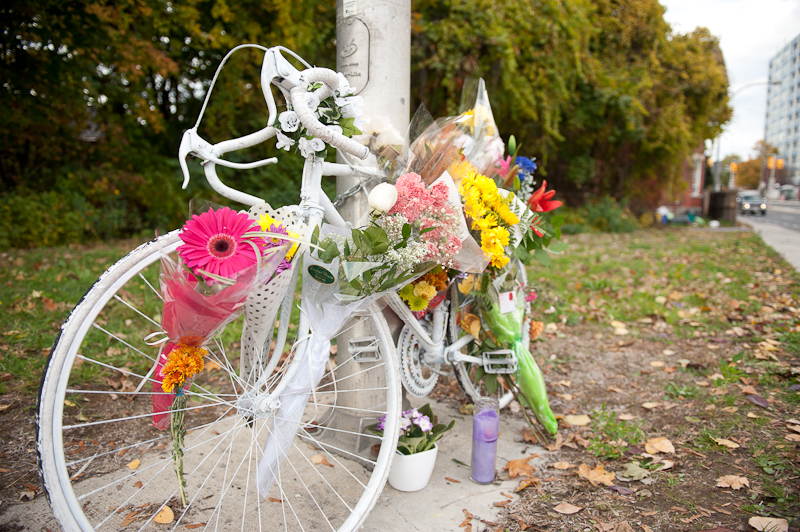
A new city proposal to make the stretch of Bronson Avenue near Carleton University safer for pedestrians and cyclists will be revealed in an open house at Carleton on Feb. 27.
City councillor David Chernushenko said the tragic death of Carleton student Krista Johnson in October was the straw that broke the camel’s back in what has been a decades long battle to make Bronson less dangerous for pedestrians and cyclists.
Chernushenko represents Capital Ward, which includes Carleton University.
“I chose to try and get something positive out of that tragedy and launched a complete review of how Bronson performs,” he said.
“Bronson is a living street; it’s an ongoing thing. I want to see this street continue to evolve into the kind of place that you wouldn’t think twice about riding your bike along.”
After Johnson’s death, Chernushenko created a working group of residents from communities around Bronson Avenue, cyclist organizations, and Carleton student groups to generate ideas for a safer Bronson Avenue.
“The level of public consultation is encouraging,” said Colum Grove-White, a Carleton graduate and member of Chernushenko’s working group, who created a petition for a pedestrian bridge on Bronson after Johnson’s death. The change.org petition now has more than 2,000 supporters.
The simplest recommendation in the city’s proposal suggests curbside bike lanes along Bronson Bridge. Currently, the bike lanes run between car lanes and intersect the busy off-ramps that lead from Bronson to Colonel By Drive going south, and the Queen Elizabeth Drive heading north.
The proposal also suggests low, flexible posts installed separating bike and car lanes, and a cyclist crosswalk from Carleton’s athletics compound to Brewer Park.
The new crosswalk would run parallel to the current pedestrian crosswalk, widening its berth and aiming to increase its visibility to motorists.
Chernushenko hopes to eventually raise the height of the crossing to further increase its visibility.
A change in the speed limit is also being recommended. Last year the city of Ottawa investigated the possibility of reducing the speed limit on Bronson north of the Glebe from 60 km/h to 50, but eventually rejected the idea. The new proposal suggests that where the speed limit changes to 70 km/h it should be 60, and where it changes to 60 km/h per hour it should be 50.
Redesigning what Chernushenko describes as “big curving off-ramps” on Bronson Bridge into right-angled intersections would be the most costly proposed change.
“That will cost in the hundreds-of-thousands of dollars. That money isn’t lying around. We’ll still have to identify where that will come from,” he said.
While changes to the speed limit will need to be approved by the city’s transportation committee, most of the recommended changes will fall under Chernushenko’s delegated authority.
“It’s in my ward. If I’m happy with it, and our professional staff aren’t raising red flags, we could just go ahead with it assuming there is money available within existing budgets,” he said.
“I can’t promise all of this will happen, and all of this certainly won’t get built overnight, but I do want to get some of the changes up before the coming walking and cycling season in the spring and summer.”
Grove-White said that he feels the proposal is a definite sign of progress in the quest to make Bronson Avenue less dangerous to pedestrians and cyclists.
“I think this is a step in the right direction,” he said.
The Ottawa Citizen published an article on Feb. 8 detailing the proposed changes to Bronson Avenue.
“From even the little bit of detail that was in the Ottawa Citizen there has been very positive feedback from people,” Chernushenko said. “I think we’ll get a good turnout at the open house at the end of the month.”





